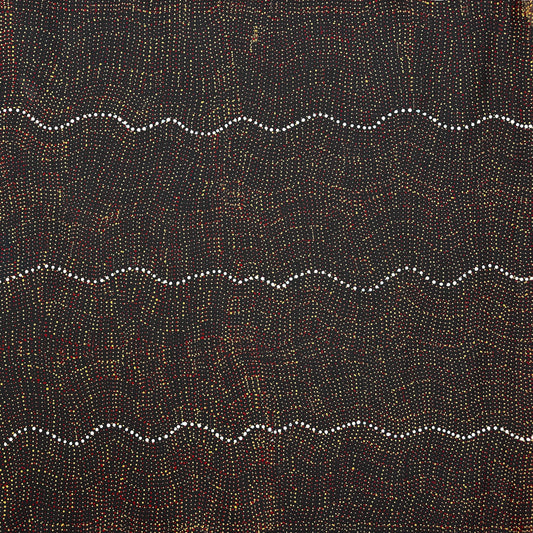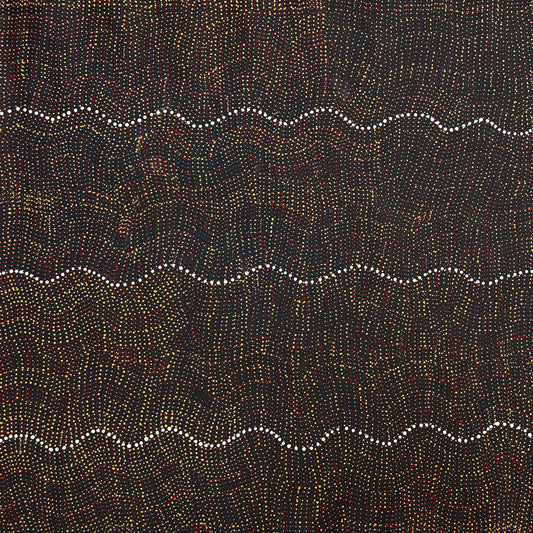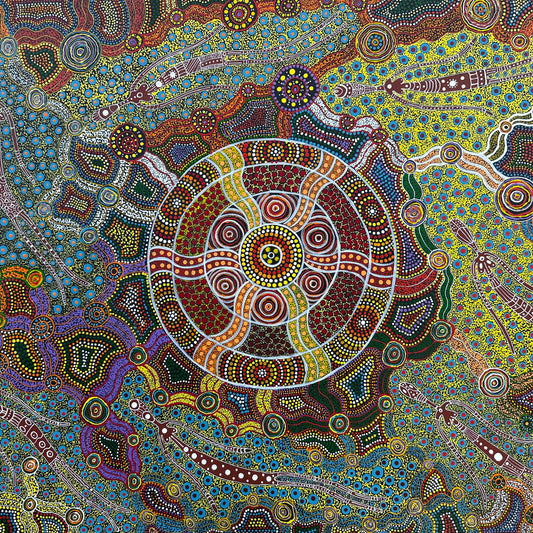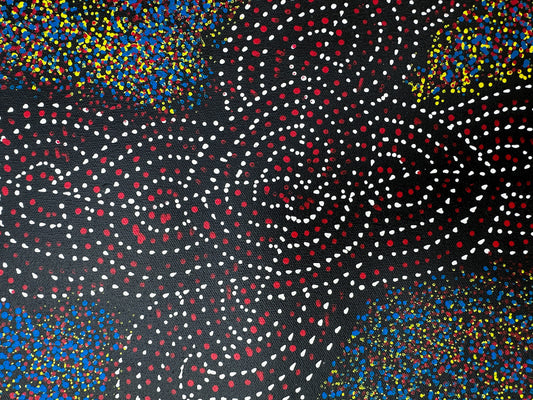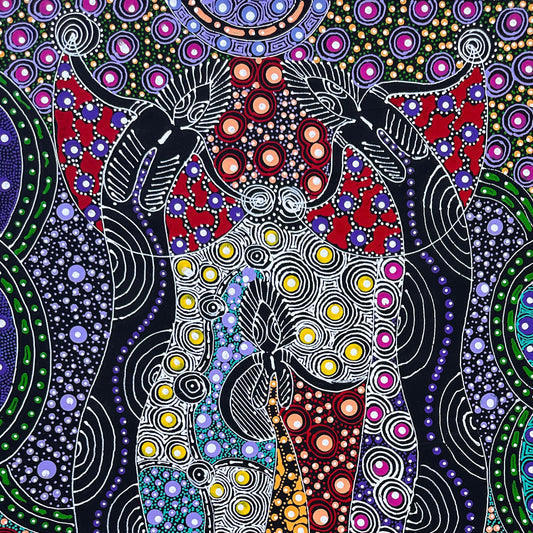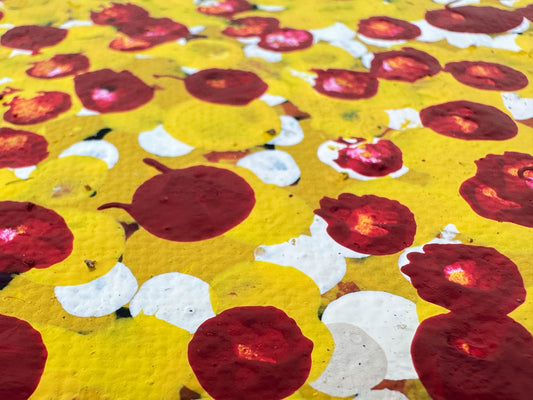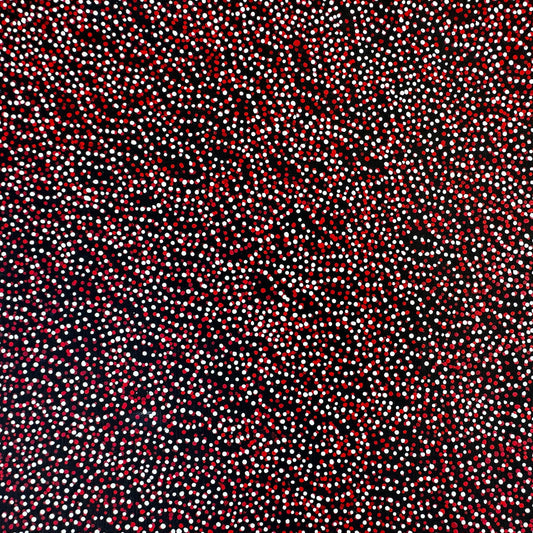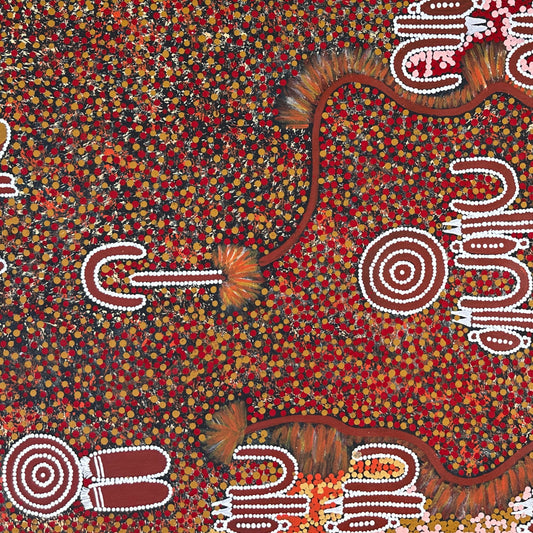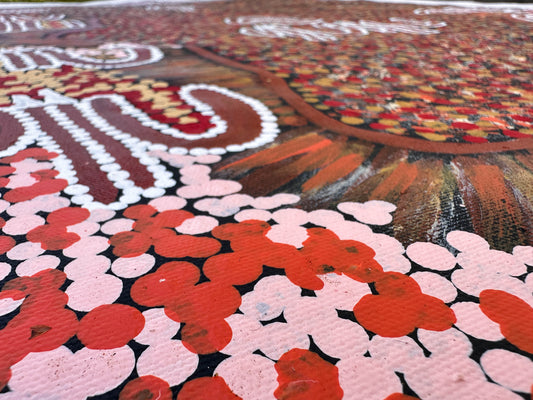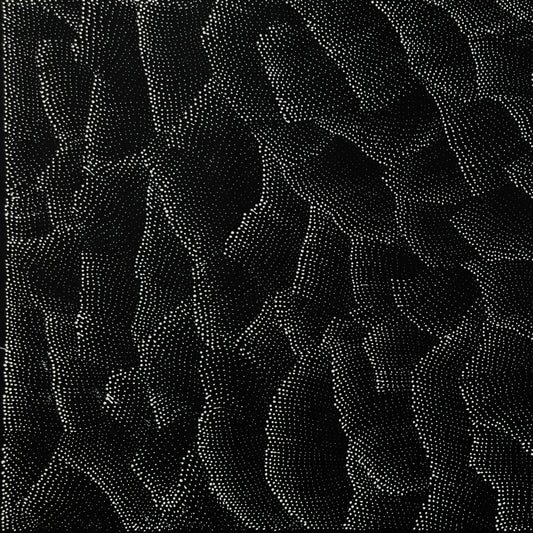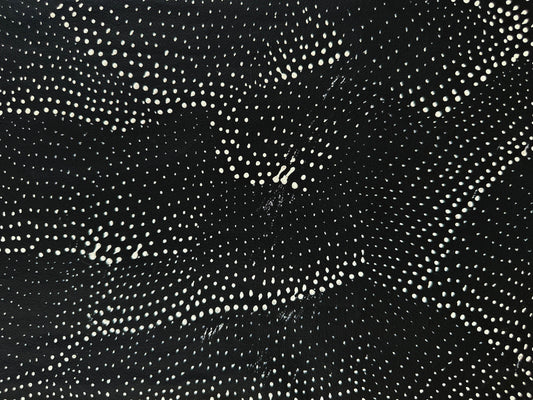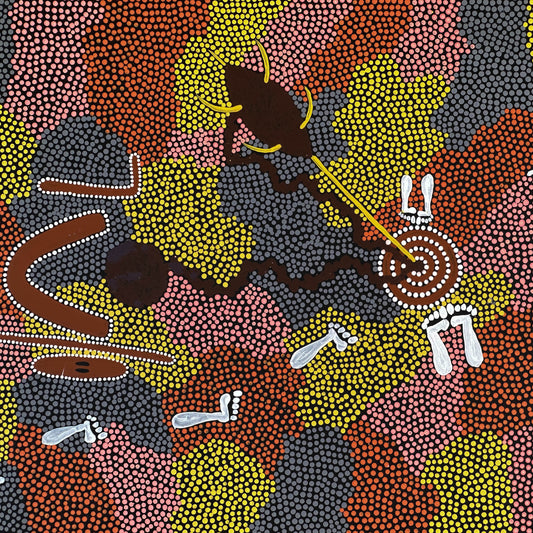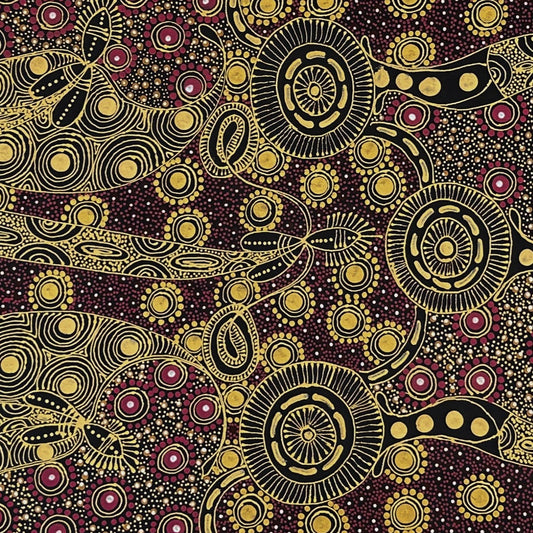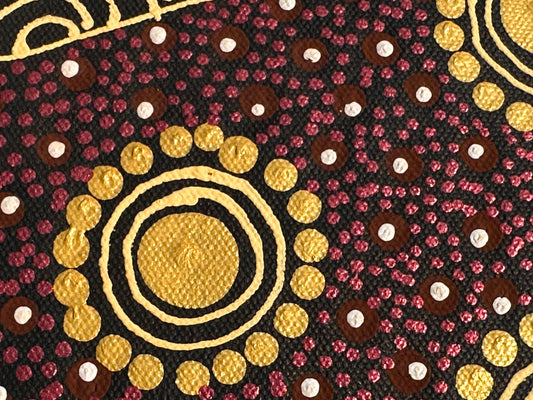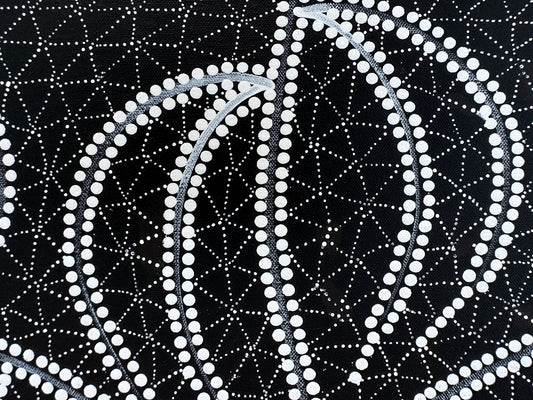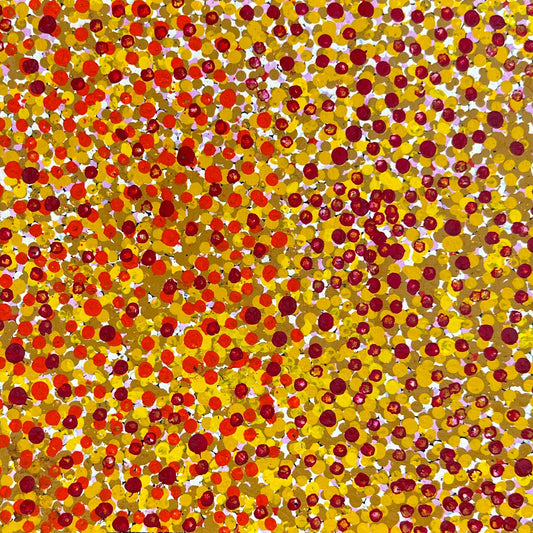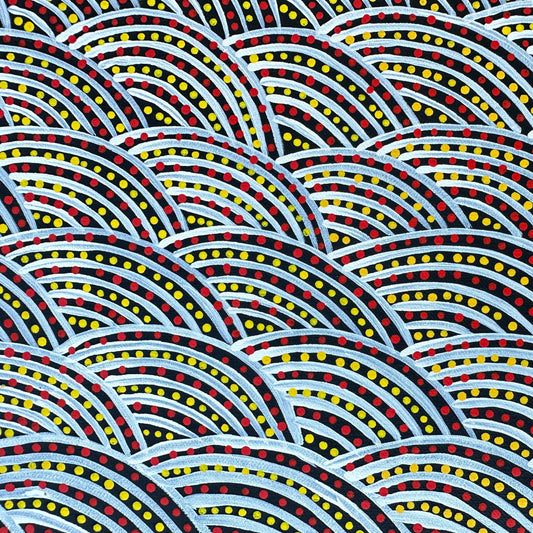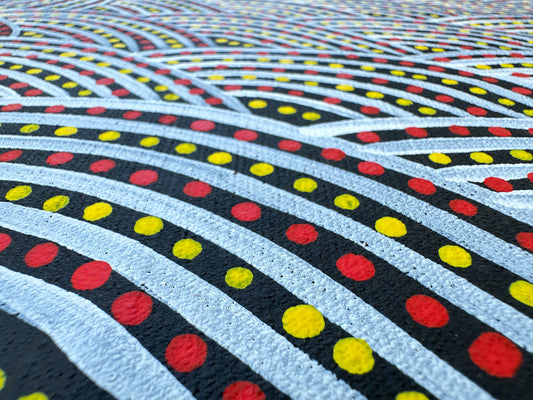Collection: Dot Artwork
Aboriginal peoples have long used dots in their art and ceremonies, with dot patterns appearing in ancient rock galleries, body painting, and sand designs. Initially, dots may have been used . . . Show More >
Aboriginal peoples have long used dots in their art and ceremonies, with dot patterns appearing in ancient rock galleries, body painting, and sand designs. Initially, dots may have been used to create a ‘shimmer’ effect, symbolizing energy or aura around designs, often linked to sacred rituals. This technique evolved into the distinctive dot painting style we recognize today, which emerged in the 1970s from the Papunya Tula artists of Central Australia. The style has since become a hallmark of Aboriginal art, especially in the Central and Western Desert regions.
Aboriginal art, including dot paintings, has always served as a means of communication, conveying Dreamtime stories, sacred knowledge, and ancestral connections. The dots themselves are a form of abstraction, allowing artists to represent sacred symbols while maintaining secrecy and protecting cultural integrity. This practice helps conceal the deeper meanings behind the artwork, which vary across regions, with different tribes using specific symbols, cross-hatching, and lines to express their unique cultural stories and beliefs.
< Show Less
-
Mary Rumble Pitjara - Anwekety (Bush Plum)
Regular price $1,795.00 AUDRegular priceUnit price / per -
KATHLEEN PETYARRE - Arnkerrthe
Regular price $7,000.00 AUDRegular priceUnit price / per -
DENISE DOOLAN - SPIRIT BEINGS
Regular price $1,350.00 AUDRegular priceUnit price / per -
GRACIE MORTON PWERLE - Bush Plum
Regular price $2,100.00 AUDRegular priceUnit price / per -
COLLEEN WALLACE NUNGARRAYI (NUNGARI) - Dreamtime Sisters
Regular price $800.00 AUDRegular priceUnit price / per -
POLLY NELSON NANGALA - Bush Plum
Regular price $1,025.00 AUDRegular priceUnit price / per -
TERESA PULA PRICE - Grandmother Country Dreaming
Regular price $1,700.00 AUDRegular priceUnit price / per -
LYNETTE GRANITES NAMPIJINPA - Bush & Two Mens Dreaming West of Yuendumu
Regular price $1,065.00 AUDRegular priceUnit price / per -
LILY KELLY NAPANGARDI - Tali
Regular price $3,700.00 AUDRegular priceUnit price / per -
ISOBEL HAGAN NUNGARRAYI - Man and Woman love story
Regular price $1,650.00 AUDRegular priceUnit price / per -
VICKY JACKSON - Women's Dreaming
Regular price $1,700.00 AUDRegular priceUnit price / per -
COLLEEN WALLACE NUNGARRAYI - Dreamtime Sisters
Regular price $3,500.00 AUDRegular priceUnit price / per -
DOREEN DIXON (DICKSON) NAKAMARRA - Ngurlu
Regular price $895.00 AUDRegular priceUnit price / per -
GRACIE MORTON PWERLE - Bush Plum
Regular price $2,195.00 AUDRegular priceUnit price / per -
POLLY NELSON NANGALA - Bush Plum
Regular price $1,025.00 AUDRegular priceUnit price / per -
PATRICIA KAMARA RAMBLER - Body Paint
Regular price $1,150.00 AUDRegular priceUnit price / per

